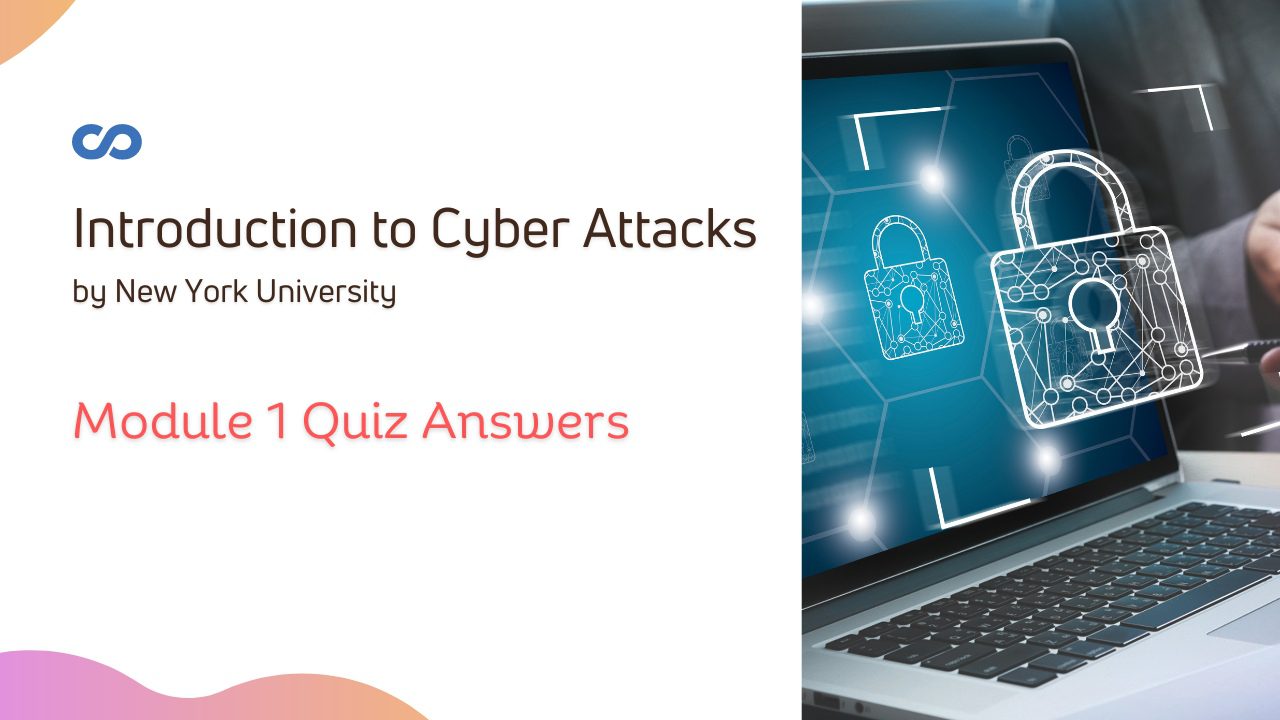Hello Friends in this article i am gone to share Coursera Course: Introduction to Cyber Attacks by New York University | Module 1 Quiz Answers with you..
Introduction to Cyber Attacks Module 1 Quiz Answers
Module 1 Quiz Answers
Question 1)
A malicious worm program is characterized by the following fundamental attribute:
- Local installation with expert system administration
- Multi-stage provisioning based on simple tools
- Auto-propagation without human intervention
- Simpler design than a Trojan horse program
- All the above
Question 2)
Embedding a trap door into a login program results in which of the following:
- A compliant version of the code with respect to some process frameworks
- A login program that requires encryption support
- An improved version of the login program with enhanced secret access
- A Trojan horse
- A trap door program with the potential to lock out authorized users
Question 3)
Learning the incredibly easy, but devastatingly effective techniques for hacking an old soda machine is instructive, because it exemplifies which of the following properties of cyber security?
- Security fixes might be simple and effective
- Simple attacks might prompt complex redesigns
- Security physical systems are simpler than you would think
- No system can ever be secure
Question 4)
Which of the following statements is true?
- Dirty code is sometimes produced by clean compilers.
- Clean code has no real difference from dirty code.
- Dirty code is always produced by dirty developers.
- Dirty compilers are always written from clean code.
- Dirty compilers never produce clean code.
Question 5)
Cyber adversary motivation does not include which of the following:
- Curiosity
- Money
- Politics
- Fame
- None of the above
Question 6)
Remote exploitation of an unaltered vehicle by hackers is enabled by which of the following design decisions:
- Being careless about the so-called “on-board bus architecture”
- Not enforcing separation between on-board entertainment and safety systems
- Using older, unsafe programming languages
- All of the above
Question 7)
Which of the following is a reasonable
conclusion that one might draw by studying Unix kernel attacks such as the old IFS exploit?
- Setting variables by users of an OS should be encouraged
- The object code for an OS runtime system cannot be understood
- Seeing open source code might help one design an attack.
- Set-uid-to-root should be used more extensively in OS design
- Open source code cannot help in the design of an attack
Question 8)
The root cause of some discovered cyber security vulnerability might reasonably be which of the following:
- The developers didn’t invest enough money during development
- The designers had too much technical training
- The government regulators were smarter than the developers expected
- It was hidden and therefore acceptable to leave in place
- All of the above
Question 9)
Buffer overflow attacks might best be avoided by which of the following preventive approaches:
- Picking better variable names
- Using languages with strong type enforcement
- Improving in-line comments
- Replacing call-by-value with call-by-name
- None of the above
Question 10)
The integrity threat can be exemplified by which of the following scenarios:
- Every customer record is stolen by hackers
- Every customer record is exposed by nation states
- Customer records were hidden, but one might have been slightly garbled
- The entire company database was posted to the Internet
- None of the above

